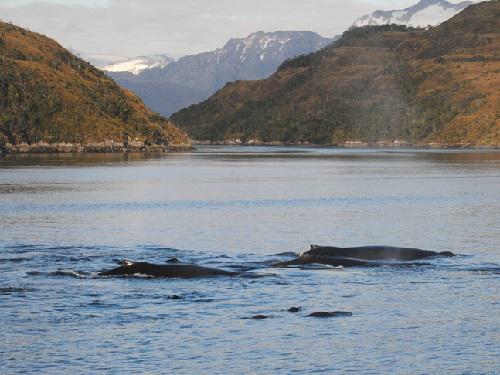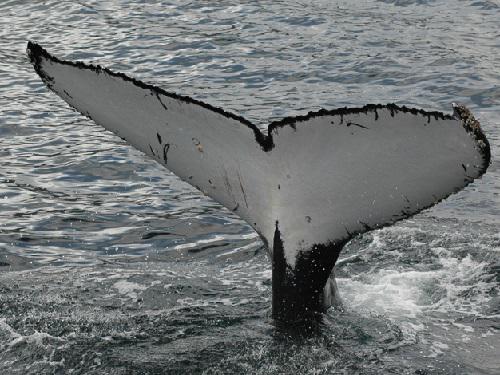Daniela Haro
This project aims to determine the feeding ecology and the trophic role of humpback whales, fuegian sprat and lobster krill in the food web of the Marine Area.

Humpback whale.
The Coastal Marine Protected Area Francisco Coloane (Strait of Magellan, Chile) was created in 2003 for the conservation of the humpback whale (Megaptera novaeangliae) feeding area and the breeding area of Magellan penguins (Spheniscus magellanicus) and sea lions (Otaria flavescens). This Marine Area is an important feeding area for large predators (i.e. fish, penguins, sea lions and whales). The pelagic marine ecosystem in this Area has high faunal diversity, with at least 13 species of marine mammals and 32 species of seabirds registered.

Marine Area.
Every year between December and May, part of the population of humpback whales from South-eastern Pacific (Stock G) comes to feed in these waters. The few studies on feeding of the humpback whale in this area indicate that the fuegian sprat (Sprattus fueguensis) and lobster krill (Munida gregaria) would be important prey in their diet. However, there are no studies analysing the trophic interactions and the role that humpback whale exert in this ecosystem, and there are no studies of the role played by fuegian sprat and lobster krill in the food web of this Area, organisms that would be sustaining populations of large predators, being important prey not only for whales but also fish, penguins and sea lions. These backgrounds evidence the need of a study to characterize the structure of this food web, considering the prospect of fuegian sprat fishery requested by the artisanal fishermen. This project will not only generate unknown information about the trophic ecology of the humpback whale, fuegian sprat and lobster krill, essential information to understand ecosystem dynamics and propose effective conservation measures in such a way to ensure long-term maintenance of this Protected Area, but also informative talks will be made to the local community and generated information will be delivered to the authorities related to the conservation of this Area.

Fluke.